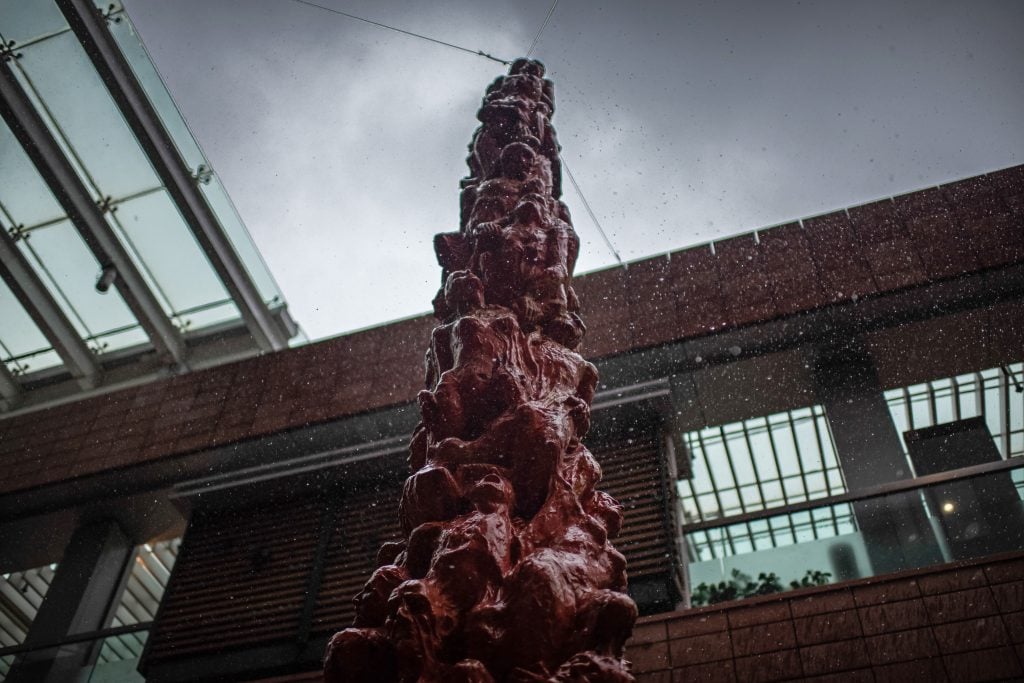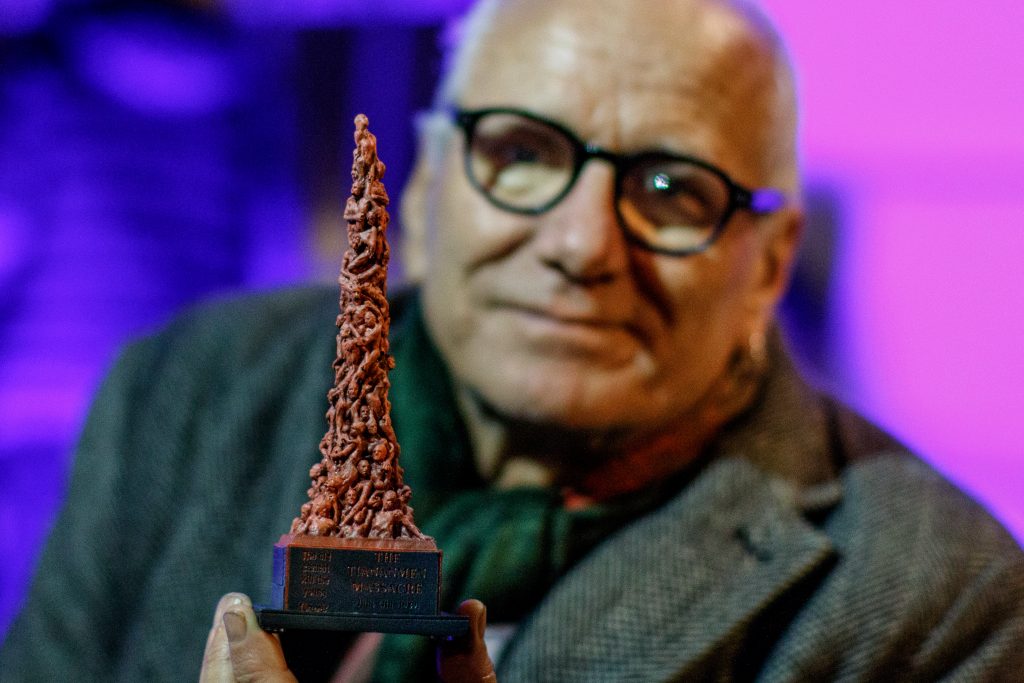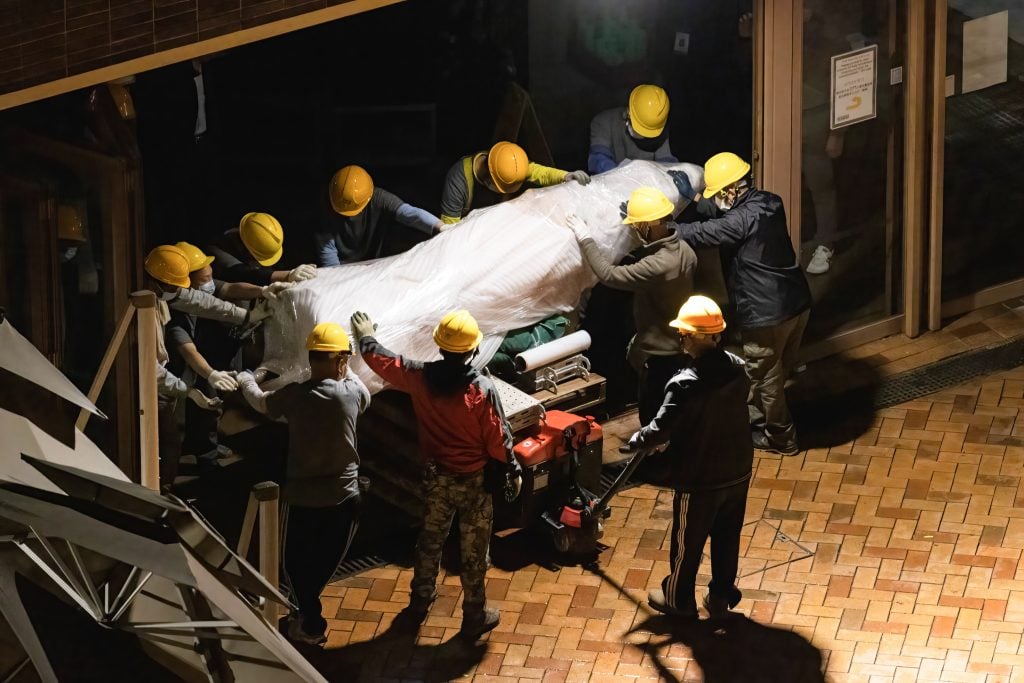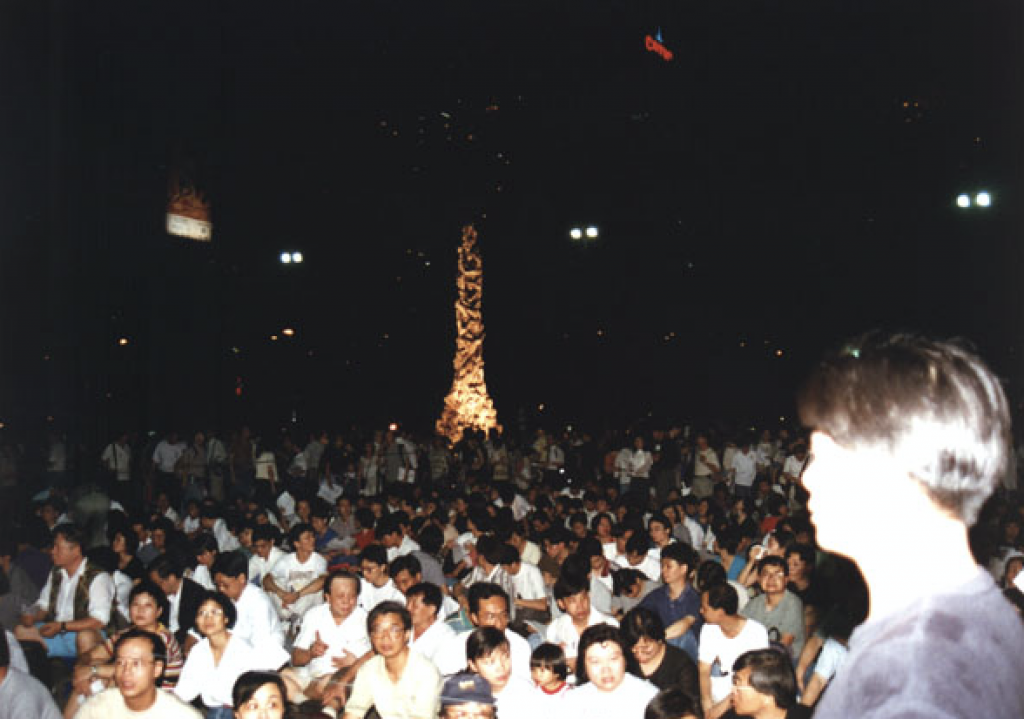Politics
Hong Kong Police’s Seizure and Suppression of a Tiananmen Monument Has Only Made It ‘Bigger,’ Its Sculptor Says
A replica of 'The Pillar of Shame,' which can no longer be seen in Hong Kong, will be unveiled in Berlin on May 22.

A replica of 'The Pillar of Shame,' which can no longer be seen in Hong Kong, will be unveiled in Berlin on May 22.

Vivienne Chow

The Hong Kong police’s seizure of a sculpture commemorating victims of the 1989 Tiananmen Square massacre has only made the work “bigger and bigger,” according to the artist.
“This is a strange thing about art,” Danish sculptor Jens Galschiøt, the creator of The Pillar of Shame, told Artnet News. “The art here is not the real object, but the movement around it. Now the Hong Kong government and the police have created a new part of my artwork in Hong Kong. It’s a never-ending story.”
Galschiøt’s 23-foot-tall monumental sculpture was seized by the Hong Kong police’s national security department on May 5 in relation to an “incitement to subversion case,” according to a government statement.

Danish artist Jens Galschiøt hold a miniature Pillar of Shame outside Chinese embassy during the Resist the Chinese Communist Party protest, a joint rally of Ukrainian, Hong Kong and Tibetian demonstrators calling for Resist the CCP protest on Chinese National Day. Photo: May James/SOPA Images/LightRocket via Getty Images.
The Pillar of Shame was created and first erected in Hong Kong just before the United Kingdom ceded control of the city back to China in 1997. The next year it was taken to the campus of the University of Hong Kong, where it stood until the end of 2021, when the university ordered the work be removed after the Hong Kong Alliance in Support of Patriotic Democratic Movements of China was disbanded.
The Alliance, a pro-democracy organization that for three decades had held an annual vigil commemorating the victims of the 1989 crackdown on pro-democracy protesters in Tiananmen Square, worked with Galschiøt to place the sculpture. The group folded amid a police probe after its leaders were arrested and charged with inciting “subversion” in 2021 under a sweeping national security law implemented in Hong Kong in 2020.
Although the Alliance helped with the installation and maintenance of the work, Galschiøt maintains that he is the rightful owner. And he has been kept in the dark about its fate since it was removed from public view, he said, only learning about the police taking possession of the sculpture from media reports.
“They said nothing to me, didn’t write to me. I have no information,” Galschiøt said, calling the seizure of his artwork “outrageous.” He has been trying to retrieve it and bring it back to Europe, fearing authorities will destroy it, but his efforts have been in vain.

The upper-half of the Pillar of Shame being moved by the workers for later transportation. Authorities in Hong Kong tore down a public sculpture dedicated to the victims of the Tiananmen Square massacre, accelerating a campaign to erase the crackdown from public recollection and stamp out dissent in a city that until recently was one of Asia’s freest. Photo: Alex Chan/SOPA Images/LightRocket via Getty Images.
Although The Pillar of Shame can no longer be seen in Hong Kong, Galschiøt has been trying to keep the work visible through an augmented reality-based campaign and by making the 3D print design available to download online. A replica of the sculpture will be installed at the forecourt of the Axel Springer building in Berlin as part of an initiative of the Axel Springer Freedom Foundation and the artist, who will be attending a panel discussion following the exhibition’s opening ceremony on May 22. The work will be on view until the end of June.
The seizure has drawn criticism from civil rights organizations abroad. The Prague-based non-profit Ngo Dei, with many Hong Kongers as members, accused the government of undermining artistic freedom and launched an online petition condemning its actions.
“This is yet another example of how the National Security Law in Hong Kong has criminalized every facet of free expression including that of artistic expression,” said Nik Williams, policy and campaigns officer at Index on Censorship. The London nonprofit last year published a report on how Europe-based artists and cultural organizations are increasingly engaging in self-censorship to avoid angering Beijing.
“For decades, The Pillar of Shame has been a powerful symbol illuminating how art can respond to state repression,” Williams said. “In recent years, and since the passage of the National Security Law, it has taken on renewed significance, highlighting how the state has moved to target artists, journalists, and civil society more broadly. Art is not a crime.”
But the Hong Kong government hit back on Saturday, saying that the allegations were “gravely unfounded,” “misleading,” and made “under the guise of artistic freedom,” adding that the “collection of evidence” was “legal, reasonable, and rational.” It asserts that although the national security law stipulates that the rights and freedoms enjoyed by the residents of Hong Kong be respected and protected, “such rights and freedoms are not absolute.”

An archival image of the The Pillar of Shame when it was first erected in Hong Kong in 1997 at the Tiananmen vigil in Victoria Park. Courtesy of the artist.
Galschiøt is still hoping to bring the sculpture back to Europe, even if it’s after the court case is over. He’s currently writing a letter to the Hong Kong government, stressing again that the work is his property and was installed when Hong Kong was still under the British rule.
The sculptor also warns that the issue is much larger than the immediate circumstances of The Pillar of Shame. If the treatment of his work is any indicator, “I have to assume that no art museums, galleries, art collectors, exhibition venues, and not least the large international auction houses, will be able to exist in Hong Kong without comprehensive self-censorship,” he said. “If you can be accused [for] exhibiting or showing a work of art that is critical of China, or maybe just critical, then the art scene in Hong Kong is completely dead.”